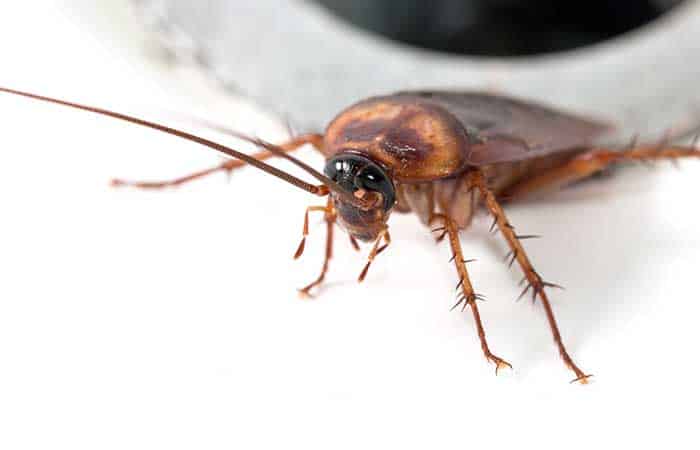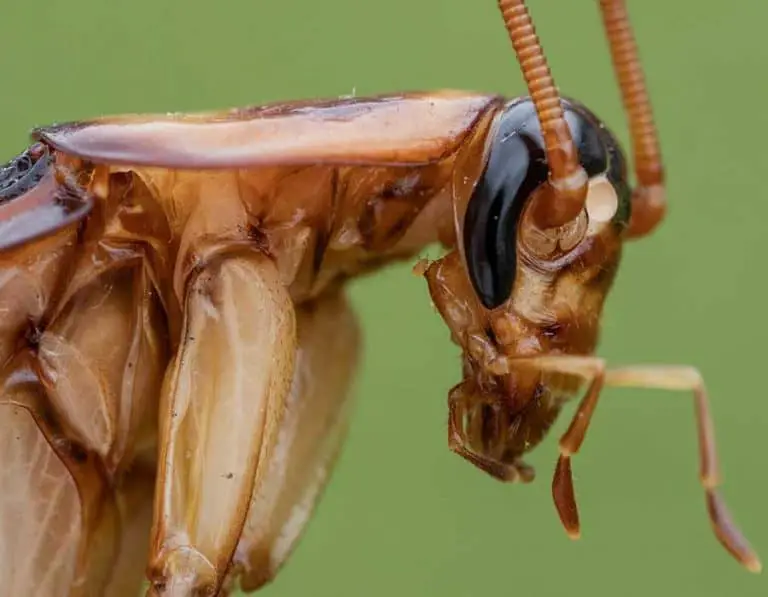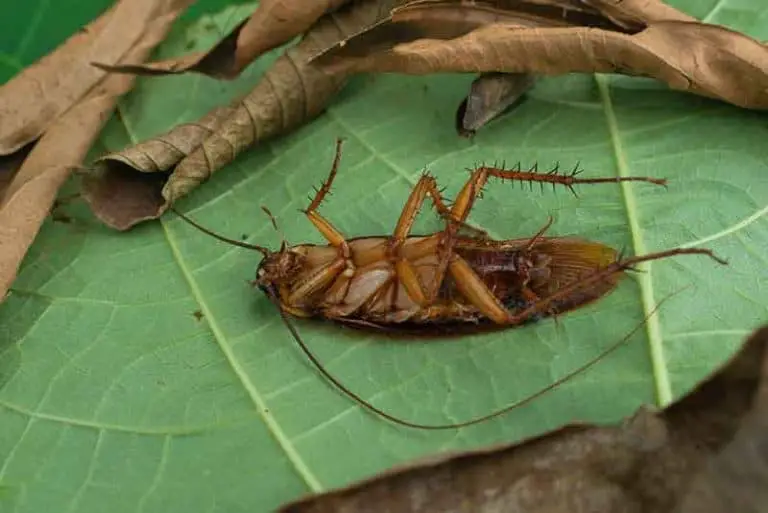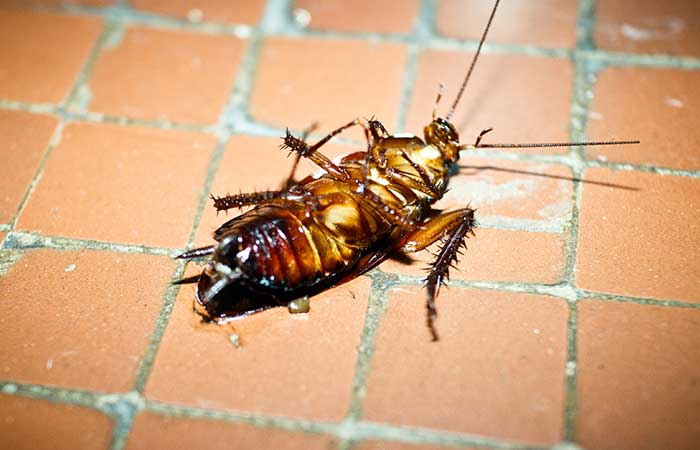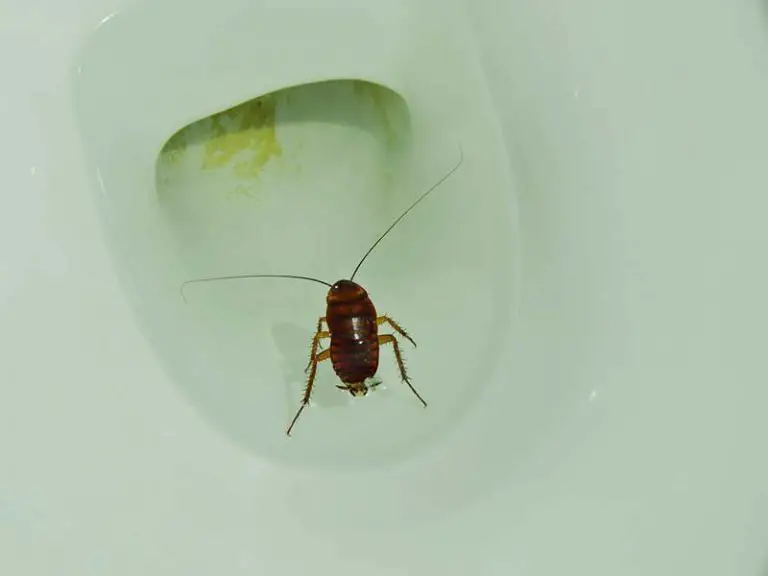Do Spiders Eat Cockroaches?
Spiders are mostly known for eating insects. They also eat nectar, seeds, and even certain types of worms. A few species of spiders (especially those that live indoors) are also known for eating cockroaches.
It can be hard to believe spiders smaller than cockroaches can actually eat roaches. However, spiders are sometimes known for digesting roaches outside of their body.
They inject enzymes that start to liquefy cockroaches which then makes consumption easier.
Spiders eat cockroaches all the time. Some species of spiders weave webs that are used to catch roaches while other spiders specifically hunt for cockroaches pouncing on them, injecting venom, and spinning cockroaches in a silk cocoon which makes an escape impossible.
Spiders are known for their ability to survive a long period without food. Roaches are prevalent in spring and summer but spiders can go without them for months.
What do spiders eat?
Spiders have a varied diet. This diet is based on the type of approach spiders have to food. Some spiders are passive in catching prey as they spin spider webs for insects to get caught up in.
Other species are active hunters constantly moving around and looking for the next meal. Here are the most common types of prey spiders are known to look for.
- Flies
- Mosquitoes
- Cockroaches
- Butterflies
- Grasshoppers
- Beetles
- Crickets
- Worms
- Ants
- Fish
- Other spiders
12 Types of spiders that eat cockroaches
Spiders eat cockroaches when they share the same habitat. Inside the house, both spiders and cockroaches live under furniture and appliances or simply next to food sources.
This is where spiders get to intersect with roaches and sometimes eat them. Here are the species that are known for eating roaches the most.
1. American house spiders
The American house spider is a common species across the US. As its name suggests, it mostly lives indoors where it eats cockroaches and other insects it finds in the house.
These types of spiders are some of the most agile when it comes to preying techniques. As a cobweb species, the American house spider builds webs that hopefully attract various types of prey.
Once caught up in the web, the prey moves looking to escape. This sends small vibrations around the web alerting the spider of a possible insect caught in its web.
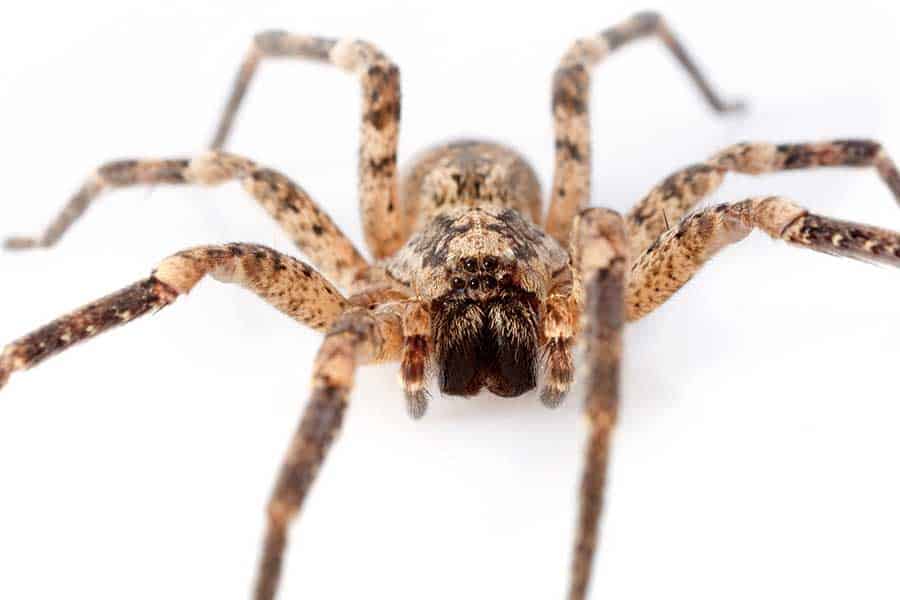
Unlike other species, the American house spider is also capable of simply pouncing on a cockroach whenever it sees one nearby without using its spider web. It might shoot silk at the roach in an effort to slow it down.
While small (these spiders grow up to 6mm), these spiders can also lure in roaches on their web by using insect parts as bait.
2. Wolf spiders
Wolf spiders are known for eating cockroaches, grasshoppers, and other insects. These are atypical spiders as they don’t spin webs and they don’t live indoors.
Wolf spiders are mostly found outdoors where they move around actively seeking roaches and other insects found outside of the house.
This species of spider is specialized in preying on ground-dwelling insects. They tend to use a couple of preying techniques against cockroaches, grasshoppers, and other insects.
Wolf spiders move and jump (up to 5 times their body size) on cockroaches or they wait for these insects to come into their range before making a move.
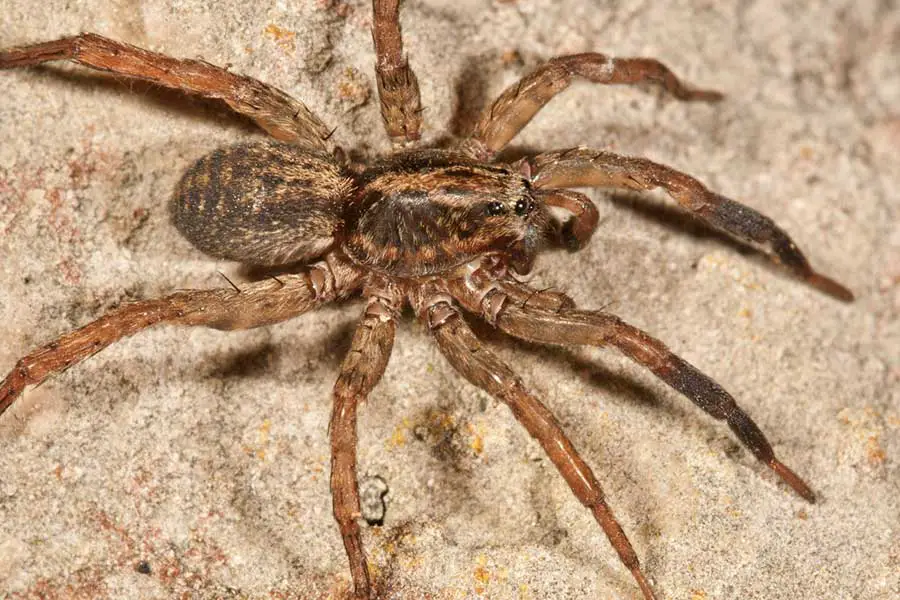
Brown, gray, and black coloring make Wolf spiders good at hiding in plain sight given they have good camouflaging. Unlike many other spiders, Wolf spiders also have excellent vision which means they rarely miss a cockroach if they decide to attack.
Wolf spiders might also hold down roaches with their front legs to prevent them from escaping.
3. Huntsman spider
Huntsman spiders are part of the Sparassidae family and are also known as Giant crab spiders. They are large light brown or grey hairy spiders that grow up to 1 inch.
Huntsman spiders live both outdoors and indoors. They are very interested in making their way inside the house (mainly in tropical and subtropical climates) where they have access to cockroaches and other insects interested in food found around the house.
These spiders are very aggressive and should not be handled. Just like Wolf spiders, Huntsman spiders will bite humans inflicting pain in the area of the bite when handled.
While not dangerous to humans, these are spiders that move fast and that can jump on cockroaches whenever they wander into homes.
4. Jumping spiders
Common across North America, Jumping spiders are another genus of carnivorous spiders that eat cockroaches. The species is known for its varied looks which are generally colorful.
Jumping spiders have short thick bodies covered in colored hairs and 4 large eyes which help them see clearly when hunting during the day.
Common in temperate climate forests, Jumping spiders are known to jump on cockroaches in an ambushing effort.
These spiders can jump a few times their body length with unique hydraulic-like legs. They are very efficient at jumping over small obstacles as well.
Jumping spiders also eat flower nectar when they can’t find any cockroaches or other insects.
5. Running spiders
Running spiders are identified by their red-brown body color. As their name suggests, these spiders are known for moving rapidly.
While they don’t jump on cockroaches, they can outrun cockroaches. This means chasing is not difficult for them.
Running spiders inject a small amount of venom into roaches and other insects which helps them immobilize prey rapidly.
These spiders can also bite humans, but their venom is not life-threatening.
6. Black Widow
Black widows are part of the Latrodectus genus together with Brown Widow spiders.
These are some of the most feared spiders in the US given their painful bit and their venomous bite that often requires hospitalization.
Black Widows are the most venomous spiders in North America and they are widely distributed across most states.
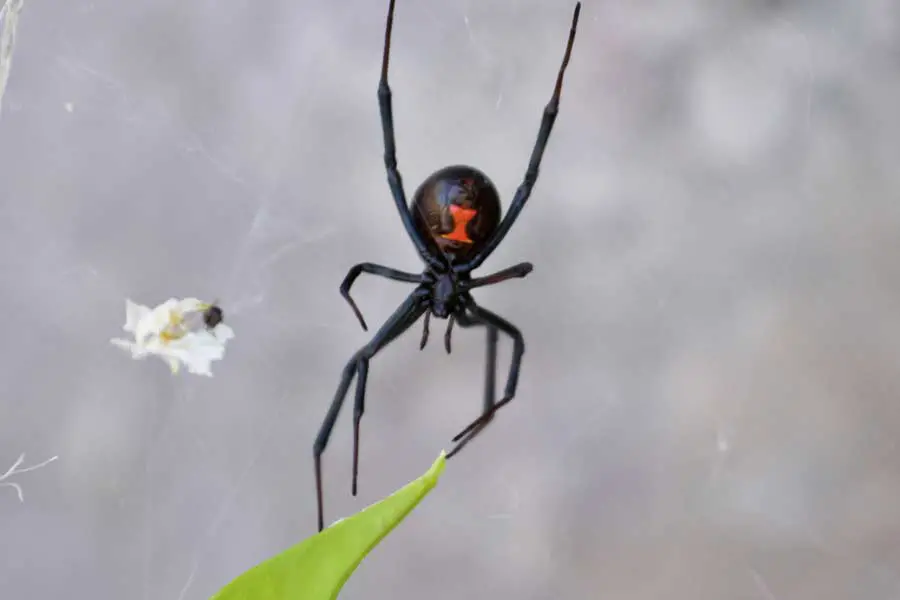
They spin webs in which cockroaches can entangle together with caterpillars, flies, and mosquitoes.
Black Widows make the most of their potent venom which may or may not be injected in the caught-up roaches.
They inject enzymes into these roaches which begins the digestive process by essentially liquefying the inner parts of the cockroach. Black Widows later return to consume the now mostly-liquid body of the cockroach.
7. Tarantulas
Multiple species of tarantulas have been shown to eat cockroaches. These are some of the largest spiders found in the US and they use a unique technique to catch roaches.
Most tarantulas catch cockroaches outdoors, at night. These nocturnal creatures hide in burrows and they spin a type of spin wire which alerts them whenever a cockroach is in the proximity of the burrow.
They can either rip the roach apart and eat it or inject enzymes and let the insect liquefy before drinking its soft parts, similar to how the Black Widow consumes its prey.
8. Yellow sac spider
Yellow sac spiders are known for spinning silk cocoons in which they spend the day in.
These spiders live both indoors and outdoors. They make their way indoors during the fall when the temperature drops seeking warmth and insects that are also pests such as cockroaches.
Homeowners don’t necessarily see these spiders during the day as they only come out to hunt at night.
These spiders are also venomous. While not dangerous to humans, they have venom that is lethal to insects.
9. Grass spider
These spiders are recognized by 2 black bands that run along the body. They grow up to 19mm and they live in grasslands, woodlands, and suburban areas.
Grass spiders are excellent hunters. With 3 rows of eyes, these spiders rarely miss a target such as a cockroach.
Spiders of the genus are also known as funnel weavers. They spin a web and a funnel they hide in nearby.
10. Hobo spider
Hobo spiders are only common around homes where there are no other spiders to compete with for food.
These spiders are common on the outer wall of the home where they build webs similar to trampolines which they sit on awaiting for insects and bugs to get trapped into.
Hobo spiders are very efficient at building spider webs around piles of wood, an area many cockroaches are found around.
11. Daddy long-legs
Daddy long-leg spiders are common in basements, cellars, and other dark damp places around the house.
The species has a varied diet and cockroaches are among its favorite foods. Daddy long-leg spiders catch cockroaches that get caught up in wall cracks or crevices.
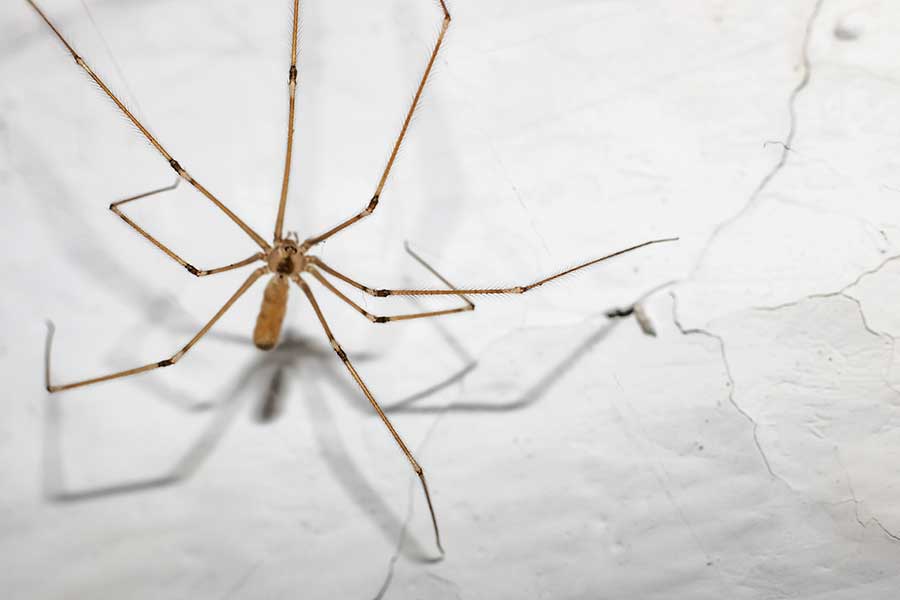
These spiders eat cockroaches frequently to the extent in which a home can become roach-free.
Recognized by their long legs, these spiders are also known for eating dead cockroaches.
12. Brown recluse
The Brown recluse is one of the most feared species of spiders in North America. Its bite is venomous and highly painful.
Brown recluse spiders sometimes share indoor habitat preferences with Daddy’s long legs as they like dark places as nocturnal creatures.
These spiders are known for eating cockroaches and other insects.
Male Brown recluse spiders are known for going to extreme lengths such as traveling long distances to find cockroaches and crickets when compared to the females of the species.
How do spiders catch and eat cockroaches?
These species of spiders use specific techniques to catch cockroaches. Many assume all cockroaches eaten by spiders end up in a spider web, which isn’t always the case.
Here are a few common types of solutions spiders use to catch cockroaches and other insects.
Spider web
Spider webs can be located indoors or outdoors at ground level or high up next to ceilings. Species that build spider webs typically sit nearby waiting for prey to get caught up in the web.
Leftover cockroach parts can be left intentionally on the spider web as prey to lure in other prey or spiders can decide to drop them to the floor to rebuild the spider web.
Funnel
These types of spider webs have attached funnel-shaped webs spiders use to hide in. Cockroaches may approach a spider web without seeing the actual spider. Grass spiders are some of the most efficient funnel weavers that eat cockroaches.
Silk wire
A single silk wire is often used either to trap cockroaches or to act as an alarm system for spiders. American house spiders are known for shooting a single silk wire at prey such as cockroaches for a quicker catch.
Jumping
Wolf spiders and Jumping spiders are known to pounce on cockroaches. They get close to their prey and they jump on it in an ambushing technique.
Jumping spiders may or may not use this technique all the time. However, they are known for having excellent vision and they rarely miss the target when they decide to jump.
Some spiders prefer to catch cockroaches that are trapped or unable to move at fast speeds. Daddy long legs and Brown recluse spiders are known to catch cockroaches when the insects are caught in wall cracks or tight spaces.
Camouflage
Wolf spiders and Grass spiders are among the species that resort to camouflage and waiting for techniques to lure in cockroaches, grasshoppers, and other insects.
These spiders have coloring similar to their environment and cockroaches might not be able to easily distinguish them. Tarantulas are also known for using camouflaging to catch a large number of insects.
Venom
Many types of spiders are venomous and possibly poisonous. All of the catching techniques above can be backed by injecting venom into cockroaches which attacks their nervous system.
Spider venom can immobilize prey but not kill it. Some spiders don’t eat caught cockroaches right away as they might come back to consume them at a later time.
Summary
Spiders eat cockroaches all the time. Most spiders that eat cockroaches are species that live indoors such as the American house spider or Daddy long legs.
Various spider species use various techniques to catch spiders. However, a limited number of indoor spiders indicates these predators can rarely eliminate serious cockroach infestations inside the house.
While spiders can eat up to 4 times per day, they might only do so only killing one cockroach and splitting it up into multiple feeding sessions.

